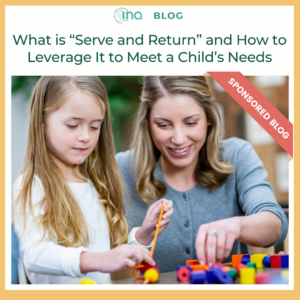 By Rayz Kidz
By Rayz Kidz
“Serve and return” is a child development term used for babies and toddlers, but it applies to all ages. The Center for the Developing Child at Harvard University describes it as follows, “At its core, serve and return is about responsive interactions between children and the people who care for them, and how those interactions help children grow and reach their full potential.” We know how to put this idea to work with the younger set. When a baby babbles, or a toddler hands us a toy, we respond by making eye contact, talking to them, taking the toy and engaging in play, or connecting in other ways. In turn, neural connections are built and strengthened in the child’s brain, supporting the development of communication and social skills. The key is responsiveness. The child serves or signals their needs, and we return or meet those needs.
If you pull back the lens and look at this back-and-forth interaction from a high level, we see that older children also serve or signal their needs, only they do it in different ways. They serve through misdirected behavior, through challenging every request we have of them, through asking us to play their favorite game for the umpteenth time when we only have five minutes to get out the door. They signal their need for connection in ways we often miss or can’t respond to because we’re focused on handling whatever is happening in the moment.
The good news is that with older kids, we have more ways to be responsive and they have a greater capacity to store and tap into feelings of love, belonging, importance and value, sustaining them when we need a bit of time to be present, connected and responsive. So be on the lookout for when your older kids are serving or signaling their needs. If we can recognize their serves, we can return in ways that are deeply meaningful to kids.
Intentionally planning daily opportunities for serve and return interactions will ensure the children are meeting these developmental needs. The Rayz Kidz app has over 500 guided play activities that are fun, easy to set up and serve as a base from which caregivers can facilitate these interactions. Each activity includes play prompts to guide caregivers in the language to use to engage in meaningful ways with the child. Visit rayzkidz.com/play to learn more and to snag a free download of 12 Important Developmental Skills to Build With the Children In Your Care Today.

